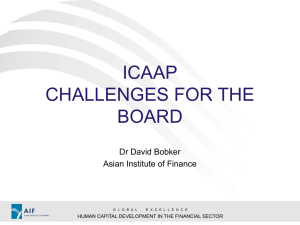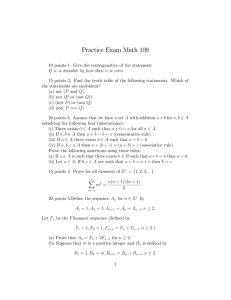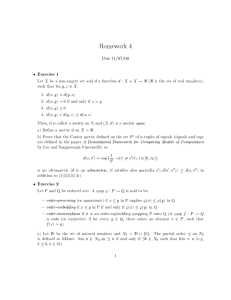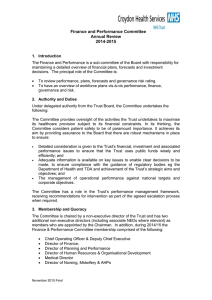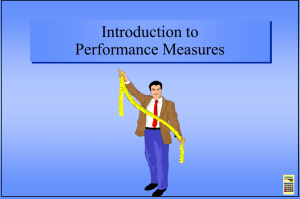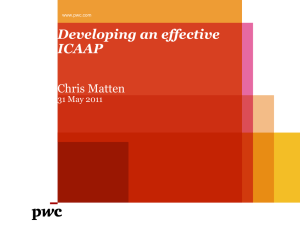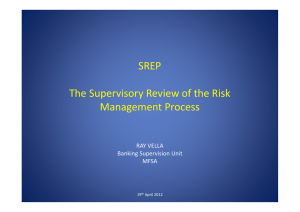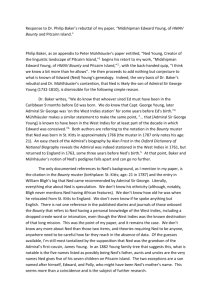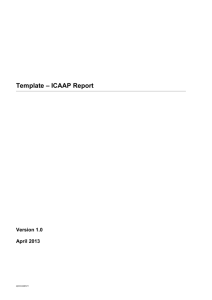The-ICAAP-a-non-execs
advertisement
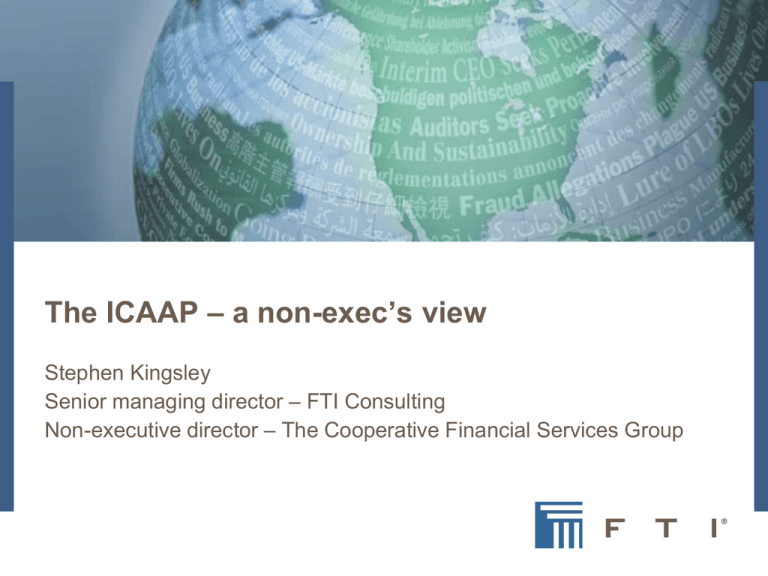
The ICAAP – a non-exec’s view Stephen Kingsley Senior managing director – FTI Consulting Non-executive director – The Cooperative Financial Services Group Content • • • • What is an ICAAP? What are the challenges at a high level? What does a NED need to understand and probe? Does it have any real benefits? 2 What is an ICAAP? The purpose of the ICAAP document is to inform the Board of the ongoing assessment of the firm's risks, how the firm intends to mitigate those risks and how much current and future capital is necessary having considered other mitigating factors. The ICAAP document is also how the firm explains to the FSA its internal capital adequacy assessment process. 3 What are the high level challenges? • It’s hard to do one well - disciplined, rigorous, comprehensive and demanding • The Board needs to understand it – this takes time and, for the NED’s, interaction between them and the executives • It must be real – getting a consultant to do it ought to be a non-starter 4 What does a NED need to understand and probe? • How risk appetite – credit, liquidity, operations, capital adequacy – is established. Is it reasonable? Is there a credible link between the different elements? • The linkage between the framework and decision-taking at all levels. • Management actions – are they credible? 5 Does it have any real benefits? • Forces the management team to document the way it thinks about risk, and manages it • Improves all-round understanding of what drives the business • Forms the basis of a dialogue around the board table • Forces NED’s to think about governance in the firm – particularly challenge and oversight within the executive team, as well as around it 6
